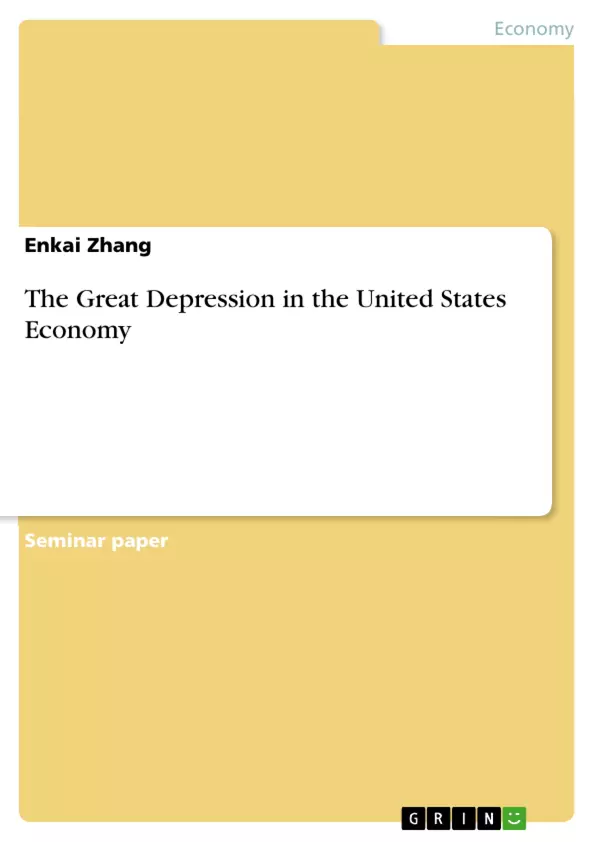The Great Depression was the worst economic epidemic in the 20th century and the worst in the United States of America. The global economic downturn that began in 1929 as a cause of the crash of the stock market lasted until 1939 took a long duration and caused a serious depression which was experienced by many countries. Its origin was the United States of America, leading to deflation in the prices of commodities, dropping of demand in credit, disruption of trade that resulted in unemployment and poverty.
Inhaltsverzeichnis (Table of Contents)
- Introduction
- Stock Market Crash
- Money, Banking and Deflation
- The Gold Standard
- Banking Panics and Monetary Contraction
Zielsetzung und Themenschwerpunkte (Objectives and Key Themes)
This article aims to explore the causes of the Great Depression in the United States and its impact on the economy. The article examines the role of various factors, including the stock market crash, monetary policy, and the banking system, in the economic downturn.
- The Stock Market Crash of 1929
- Monetary Policy and the Gold Standard
- Banking Panics and the Contraction of the Money Supply
- The Role of Government Policies
- The Impact of the Great Depression on the American Economy
Zusammenfassung der Kapitel (Chapter Summaries)
The article begins by introducing the Great Depression as the worst economic crisis of the 20th century, emphasizing its origins in the United States. The stock market crash of 1929 is presented as a catalyst for the depression, triggered by the Federal Reserve's tight monetary policy and a loss of investor confidence. The impact of the crash on consumer spending, wealth, and investment is discussed, leading to a significant decrease in economic output.
The role of money, banking, and deflation is examined in the next section. The gold standard, the prevailing monetary system at the time, is analyzed, highlighting its impact on gold reserves and the contraction of the money supply. The consequences of gold withdrawals, speculative attacks on the dollar, and the eventual abandonment of the gold standard are explained.
The article concludes by focusing on banking panics and their impact on the monetary contraction. The recurring banking panics of the early 1930s, resulting from depositors' loss of confidence in banks' solvency, are described. The effects of bank failures, the Federal Reserve's response, and the government's intervention through bank holidays are discussed.
Schlüsselwörter (Keywords)
The article focuses on key topics such as the Great Depression, stock market crash, monetary policy, gold standard, banking panics, deflation, and the economic impact of these factors on the United States.
- Arbeit zitieren
- Enkai Zhang (Autor:in), 2015, The Great Depression in the United States Economy, München, GRIN Verlag, https://www.grin.com/document/294260



